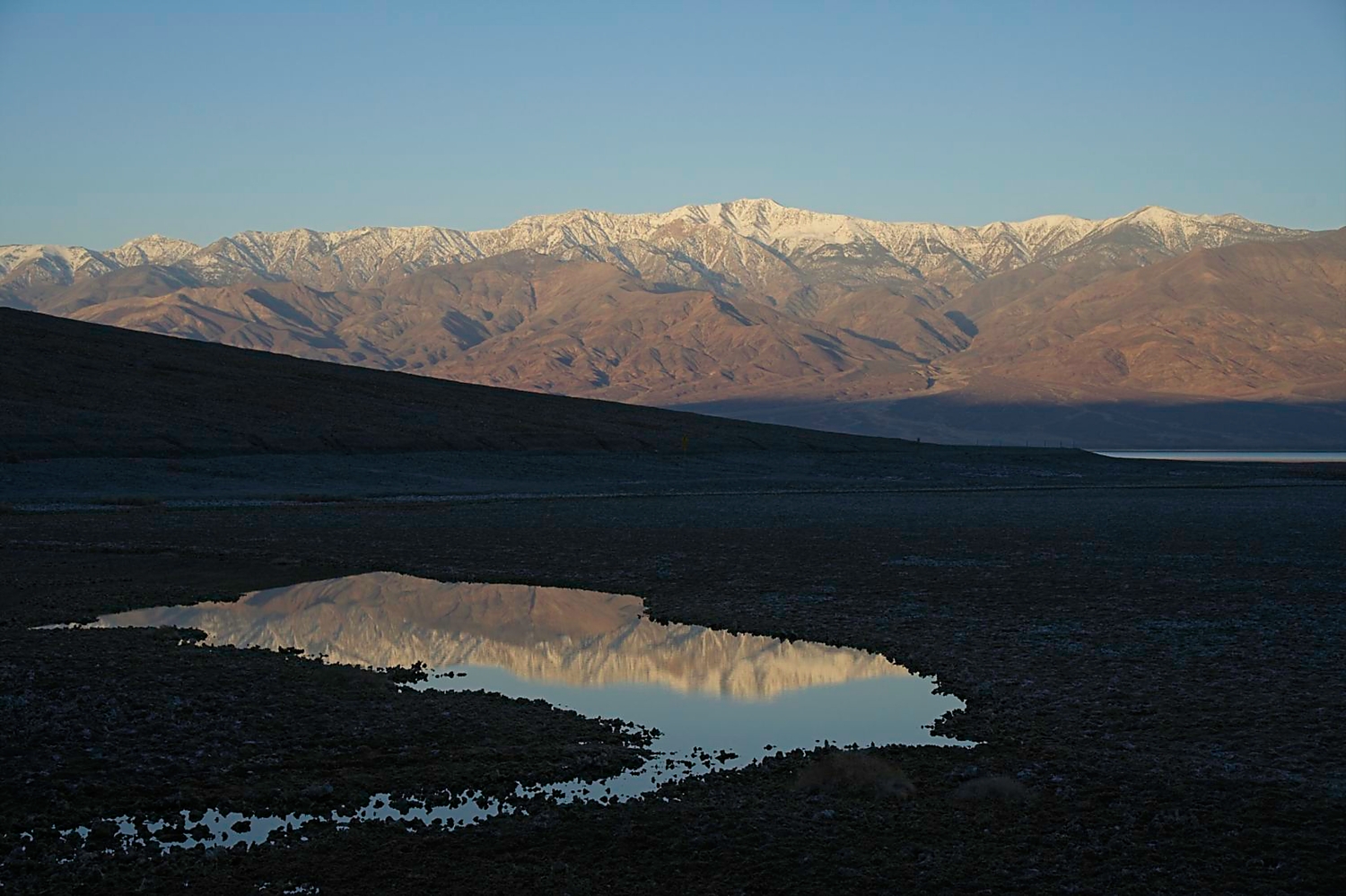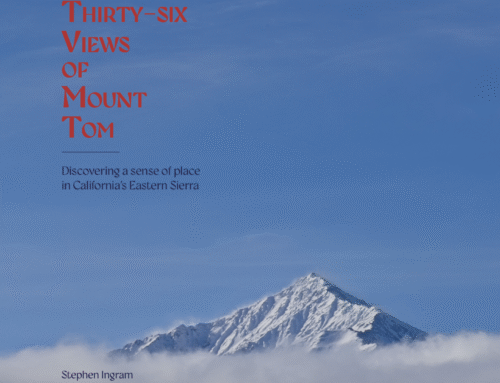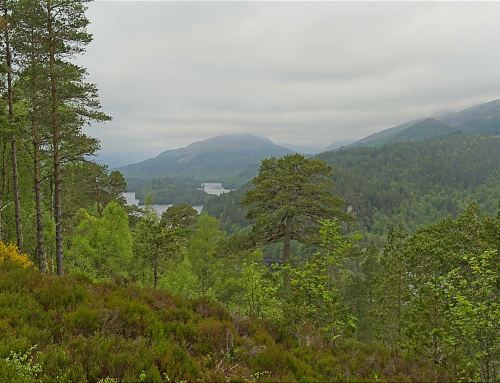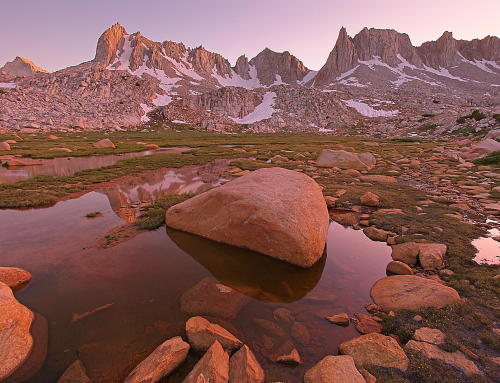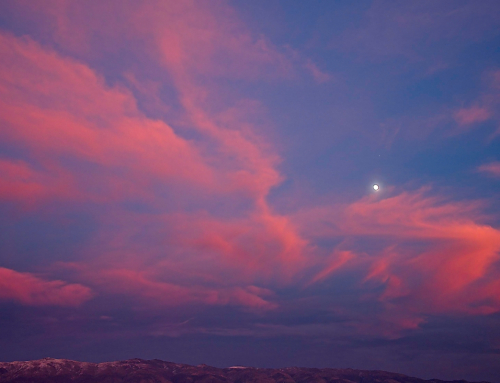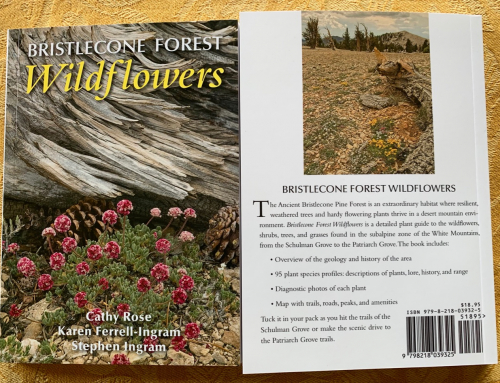Record-setting rains in Death Valley over the previous 10 months created an ephemeral 6×3-mile lake and produced huge, long-lived, blooming annuals in the region’s desert landscapes. Below are descriptions of two, short adventures in Death Valley National Park.
Part I: The Lake
Death Valley receives only 2.15 inches of rain per year on average. Less than an inch of rain fell in 2018 and 2020. But in 2023, Death Valley (at Furnace Creek) recorded 4.27 in. On August 20, Tropical Storm Hilary barrelled northward into southern California and dropped 2.26 in. of rain in Death Valley, setting a new one-day rainfall record that exceeded the annual average! Badwater Basin filled like a huge puddle. Another 2.74 in. of rain fell between then and the end of February 2024. By then, Badwater Basin resembled (albeit with some imagination) Pleistocene Lake Manly, and boaters were flocking to Badwater to paddle the saline waters before they evaporated. 2005 was the last time it was deep enough to paddle in. Back in the years of the Tahoe Glaciation, 185,000 to 120,000 years ago or so, Lake Manly was estimated to be 150 to 300 feet deep, and covered over 600 square miles. The lake dried up, then grew to a smaller Lake Manly during the Tioga Glaciation, roughly 35,000 to 10,000 years ago.
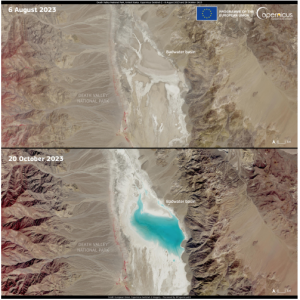
Copernicus Sentinal-2 satellite image of Death Valley, 2023
I loaded my kayak and drove over the Inyo Mountains and Panamint Range and down into Death Valley on February 27, and spent the night camped at Hole-in-the-Wall. Yellow suncups were already two feet tall and flowering profusely. I noticed other sizable annuals and fall-flowering shrubs still in bloom, then realized the long wet stretch was the likely cause. As some plants seemed to benefit from the record rainfall, other plants were buried under feet of rocks from debris flows that deepened alluvial fans and also covered miles of the park’s roads.
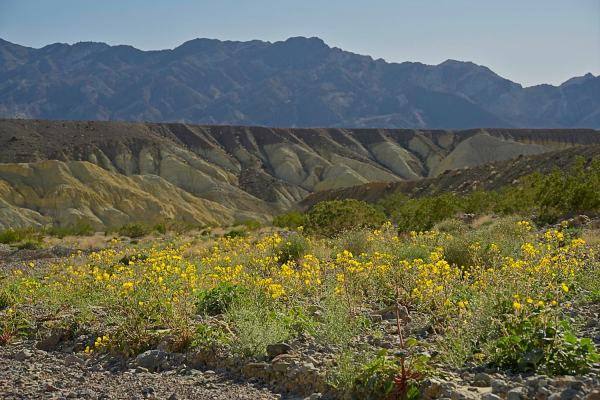
Suncups (Chylismia brevipes) and other wildflowers at Hole-in-the-Wall, Death Valley NP.
At twilight, the call of a great horned owl echoed off the walls of tilted conglomerate.
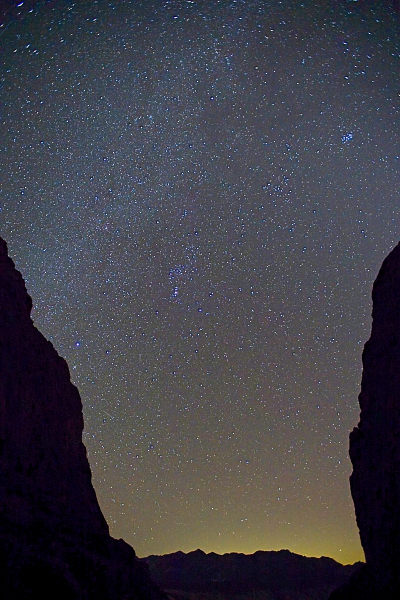
Night sky through Hole-in-the-Wall, Death Valley NP
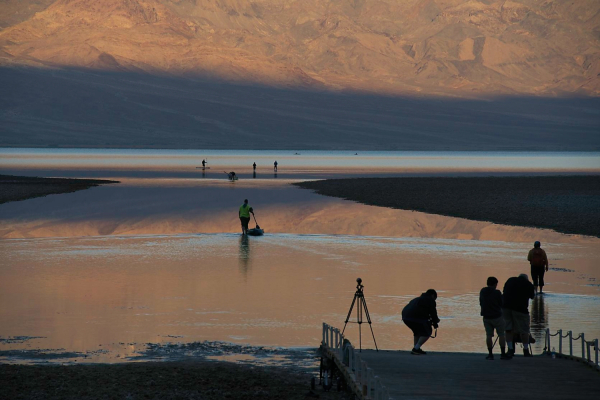
Early morning activity at Badwater with boaters and press photographers.
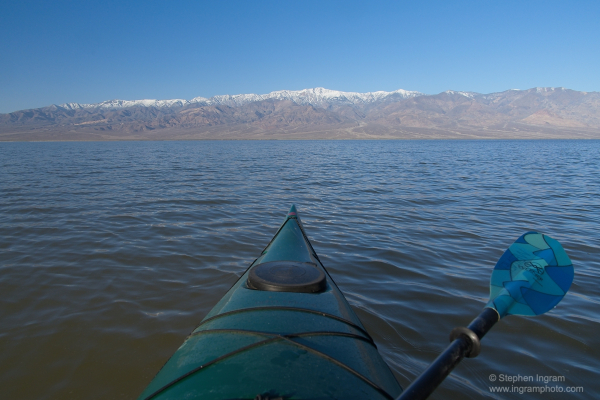
Kayaking on Lake Manly, Badwater, Death Valley NP
At first light I drove down the wash and back to sea level. About an hour later I found myself towing my kayak through 6 in. of water at 280 feet below sea level as I waded toward the snow-topped Panamint Range. Although the water eventually deepened to 12 or 18 inches, it was murky and felt much deeper. The experience of sitting in a kayak on a relatively small part of the previously expansive Lake Manly – which has been dry for most of the past 10,000 years – was wonderfully surreal.
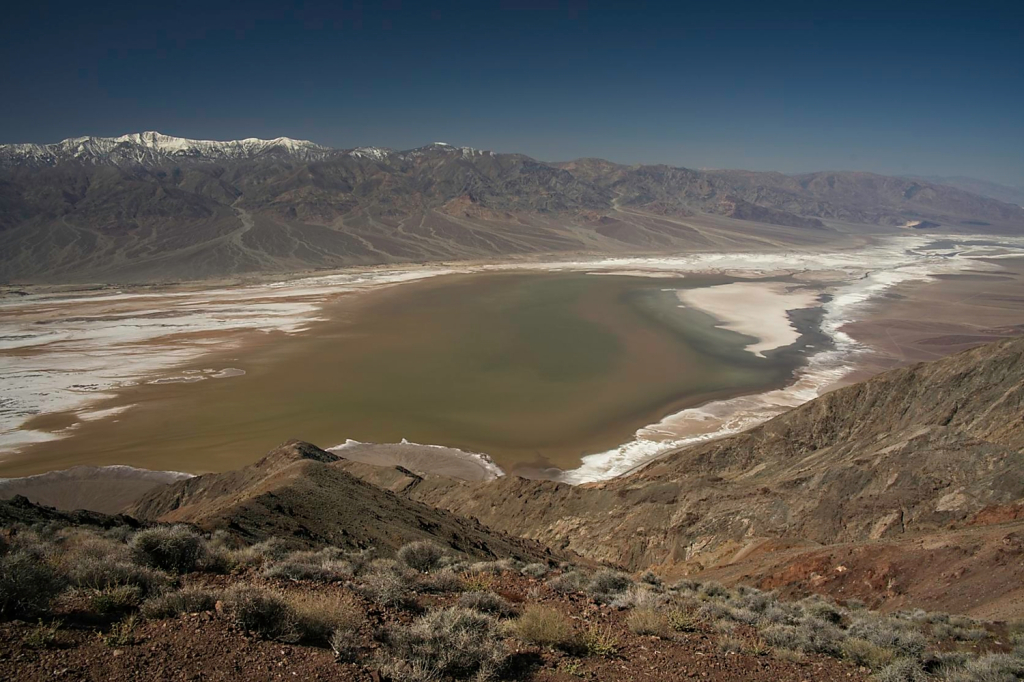
Lake Manly below the snow-covered Panamint Mountains, from Dante’s View, Death Valley NP.
For the next several days, the wind blew hard from the south and pushed Lake Manly northward. This enlarged the lake, but made it shallower. On March 6, the National Park Service closed Badwater to boating because the water was too shallow.
Part II: The Racetrack
Two months later, I drove the long and lonely road to Death Valley’s southern Last Chance Range to join a few botanist friends for hiking and plant-hunting. They are trying to wrap up a project documenting the flora (all vascular plant species) of this area. They recently wrote a Flora of Northern Death Valley (incl. the northern Last Chance Range) and hoped to find additional species in the southern reaches of this sedimentary mountain range. The drive through Eureka Valley and over the northern part of the Last Chance Range was gorgeous, with expansive stands of blooming apricot globemallow, purple notch-leaved phacelia, and many other showy plants. One of my favorite desert plants, Death Valley monkeyflower, is restricted to walls and steep slopes of limestone in only a few mountain ranges within Death Valley National Park. It too was blooming in profusion in the northern Last Chance.
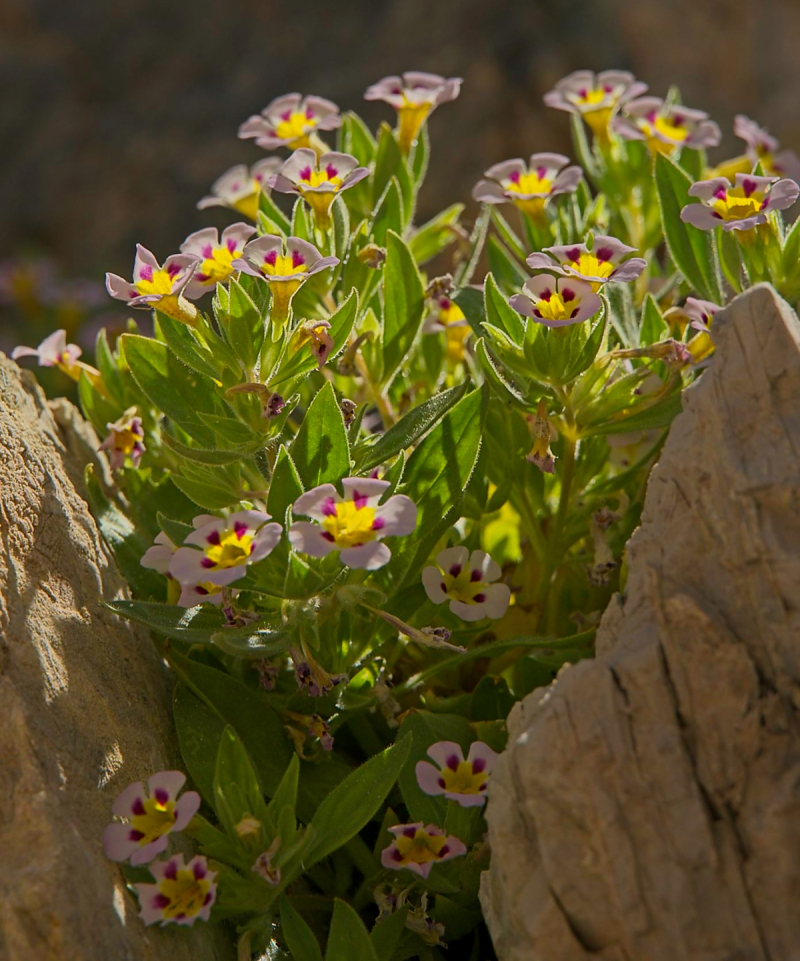
Death Valley monkeyflower, Diplacus rupicola, Last Chance Range, Death Valley NP.
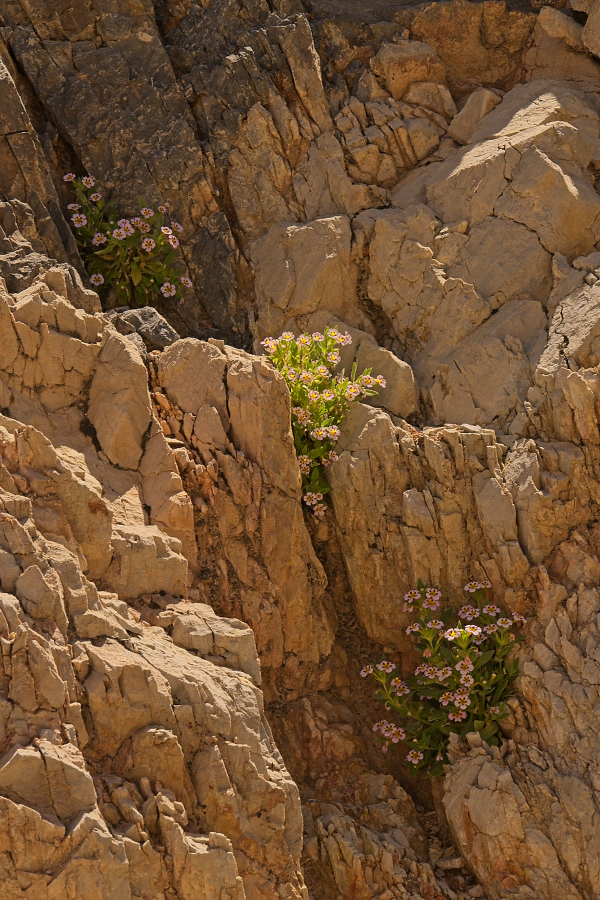
Monkeyflower Wall, Last Chance Range, Death Valley NP.
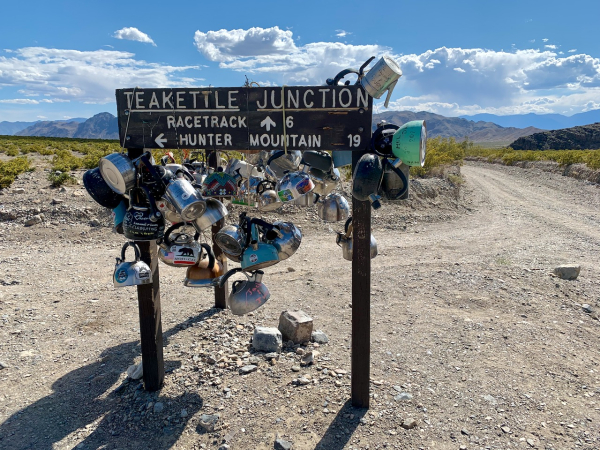
Teakettle Junction signpost, Racetrack Valley, Death Valley NP.
My last trip to the Racetrack Valley area was over 20 years ago. That time I came to take photos and verify mileage and directions for the Cachuma Press publication, Death Valley and the Northern Mojave Desert: A Visitor’s Guide. I had forgotten that the final 30 miles of bone-rattling washboard was a two-hour drive. Anyway, six of us met at the primitive Homestake Campground 3 miles south of the Racetrack. We were surrounded by an enormous expanse of flowering creosote with only the sound of the wind and songs of black-throated sparrows and rock wrens.
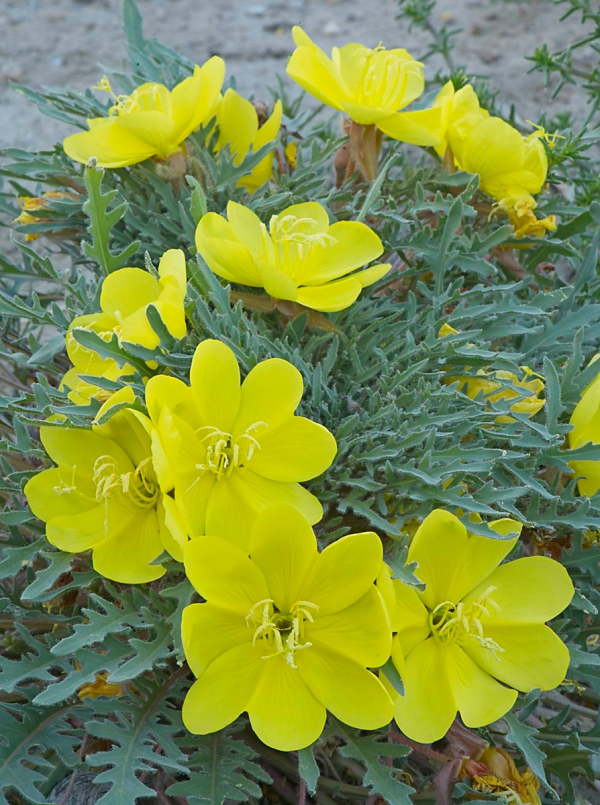
Large yellow desert primrose, Oenothera primiveris bufonis, Homestake CG, Death Valley NP.
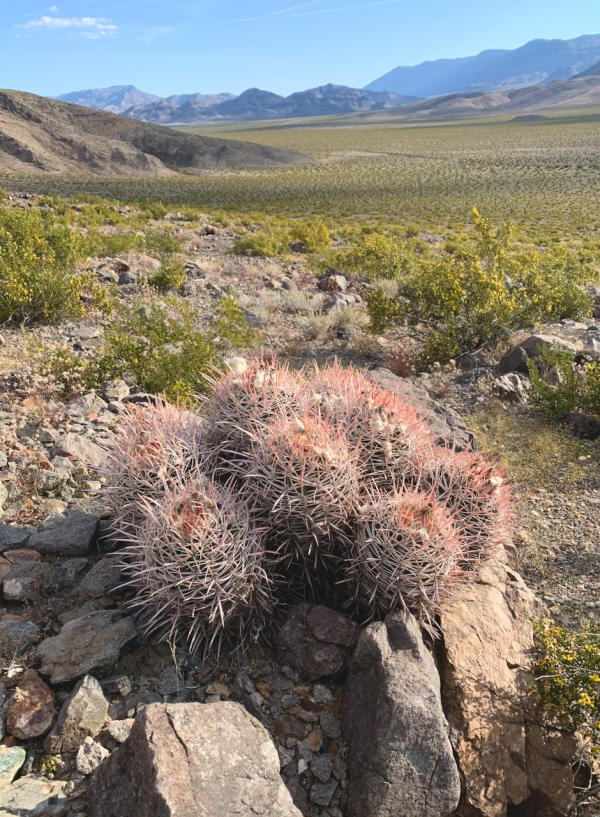
Cottontop or clustered barrel cactus, Homalocephala polycephala polycephala, Racetrack Valley, Death Valley NP.
As we admired numerous pink-flowered gilia and unusually large Mojave sandwort, we were surprised to find July gold in bud, a shrub in the buckwheat family. This species was first discovered by Owens Valley botanist, Mary DeDecker and her husband Paul in the northern Last Chance Range on July 4, 1974. This yellow-flowered, state-listed rare species is also known from a few canyons at the western base of the White Mountains east of Bishop. But these few plants we came across comprise the southernmost population known.
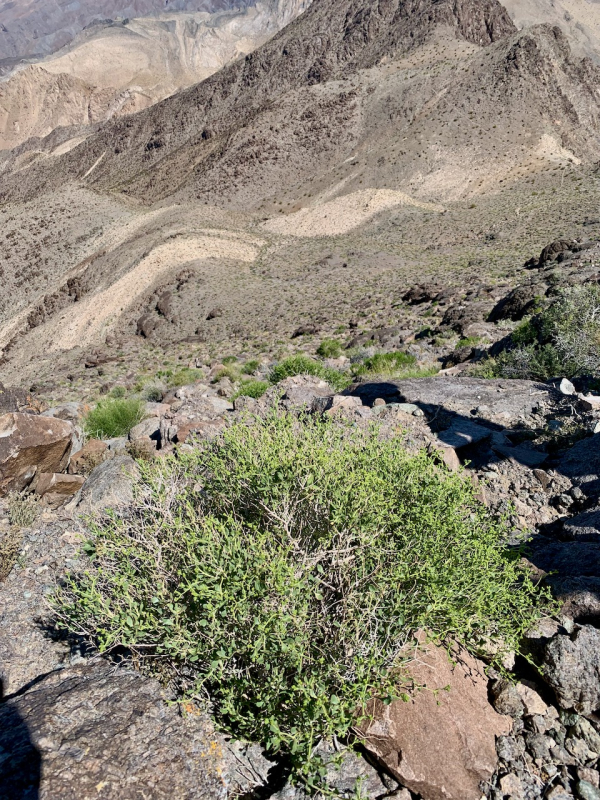
July gold, Dedeckera eurekensis, north slope of Ubehebe Peak, Death Valley NP.
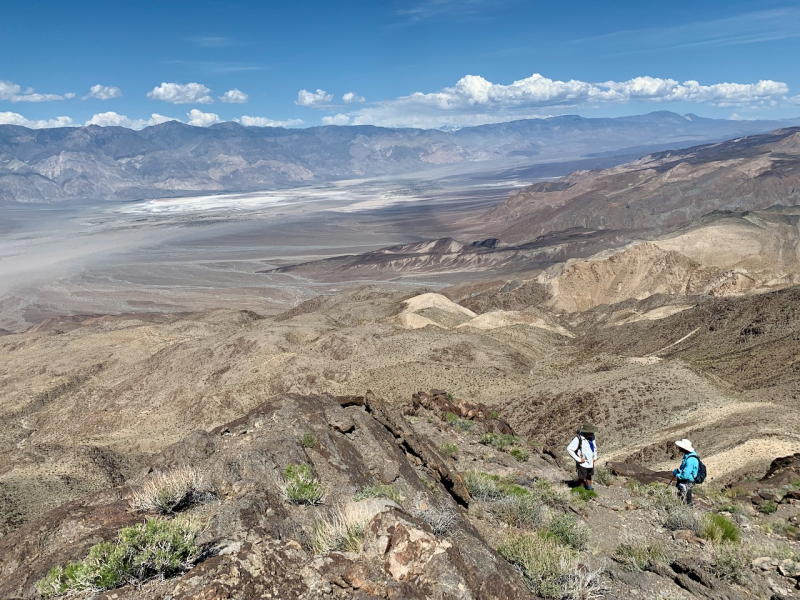
View northwest of Saline Valley and Inyo Mountains from Ubehebe Peak trail, Death Valley NP.
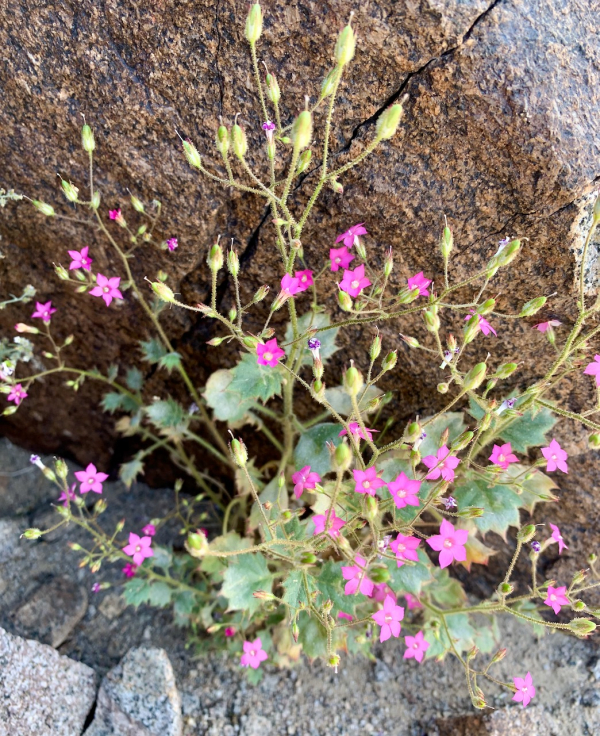
Broad-leaved gilia, Aliciella latifolia, Ubehebe Peak, Death Valley NP.
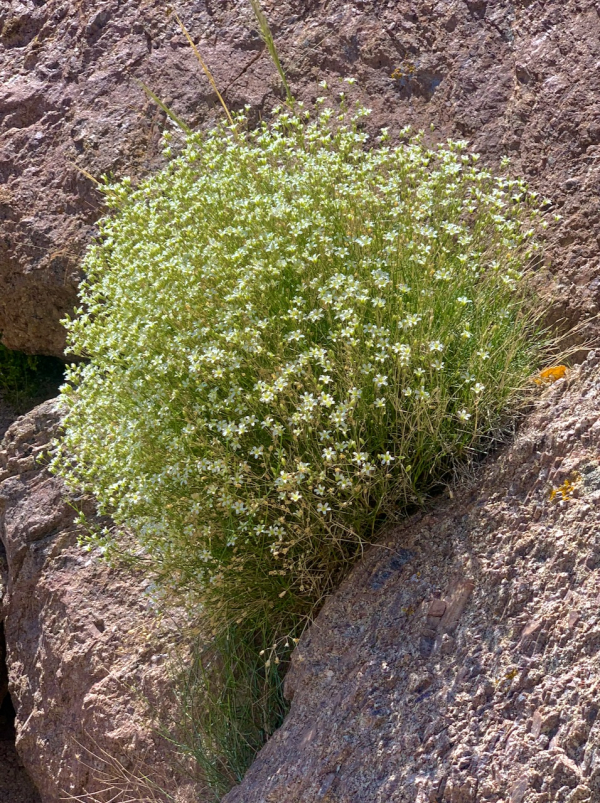
Mojave sandwort, Eremogone macradenia, Ubehebe Peak, Death Valley NP.
Although we did not make the last 1/3 mile trail-free ascent to the summit, we made many iNaturalist obervations and plant collections during our walkabout. Back at the Grandstand parking area, most of us opted to wander out to the quartz monzonite boulders of the Grandstand, where we were rewarded with a view of one common chuckwalla outside his rocky enclave, and one incongruous great egret who may have come to hunt smaller lizards.
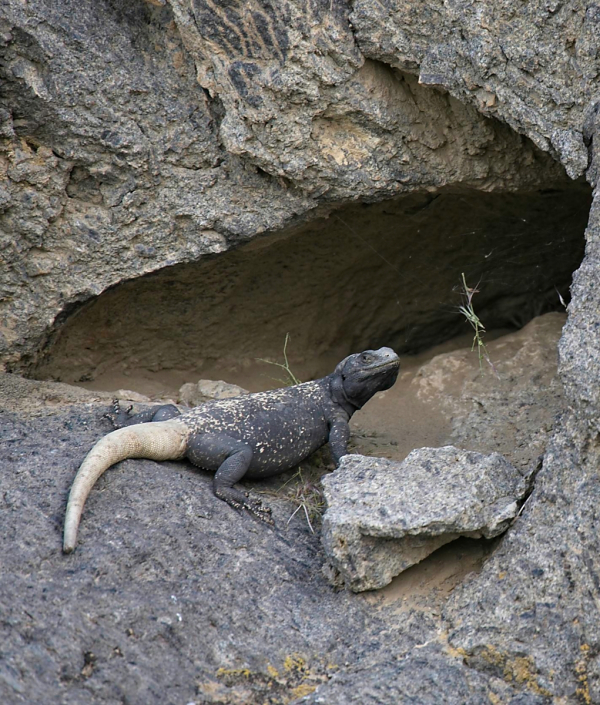
Common chuckwalla, Sauromalus obesus, Death Valley NP.
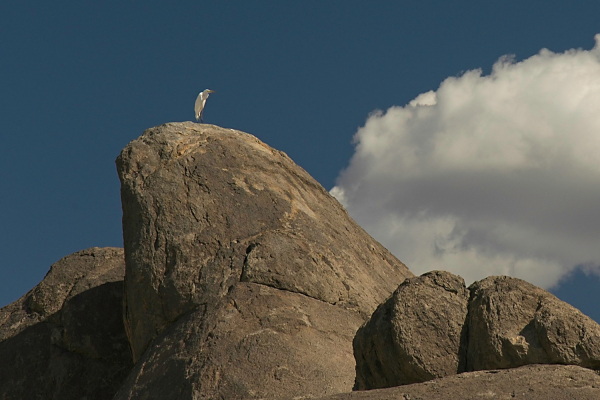
Great egret at Grandstand, Racetrack Valley, Death Valley NP.
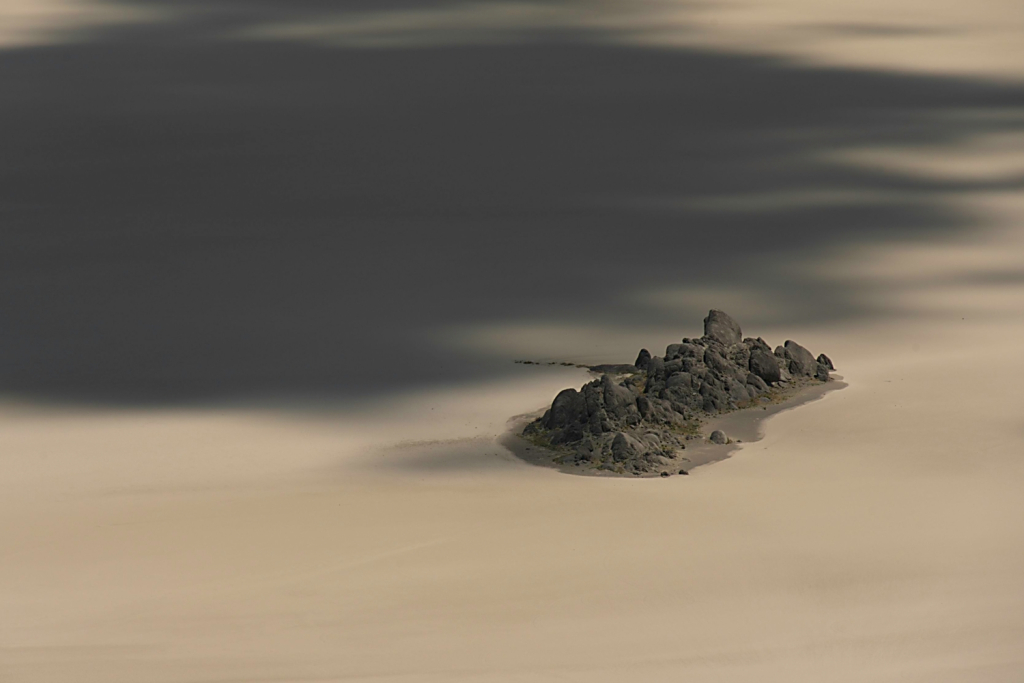
Grandstand of the Racetrack, from Ubehebe Peak, Death Valley NP.
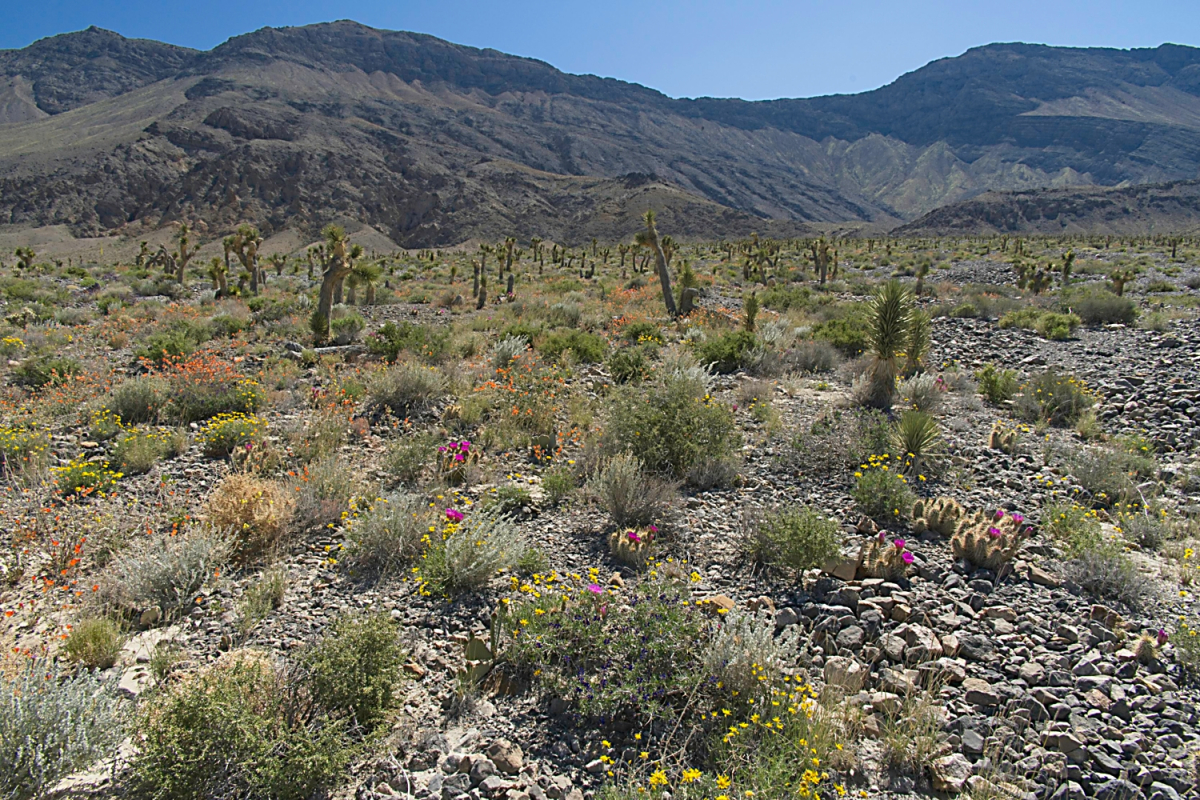
Mojave Desert bloom near Teakettle Junction, Death Valley NP.
Despite the wind, heat, and rough roads, Death Valley’s desert landscapes and their native inhabitants are well worth visiting in the spring.
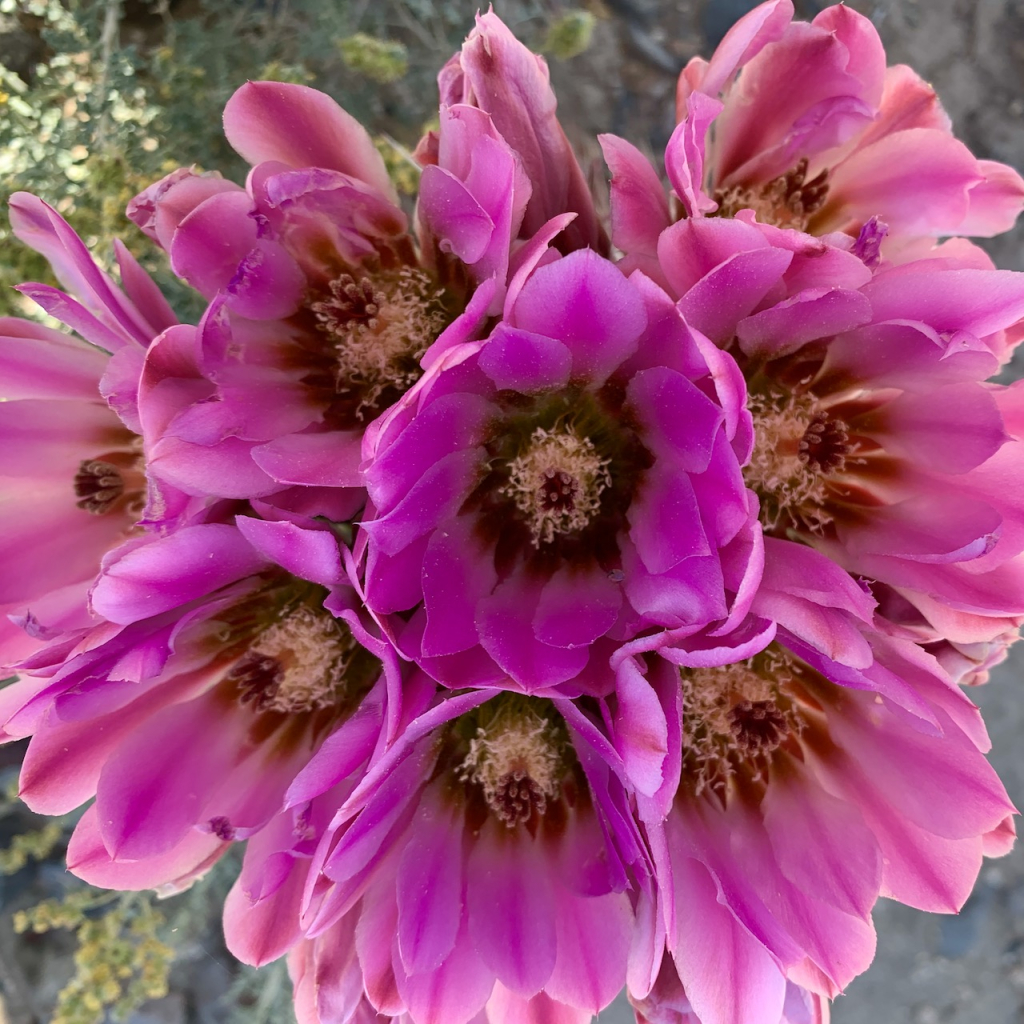
Mojave fishhook cactus flowers, Sclerocactus polyancistrus, Racetrack Valley, Death Valley NP.

